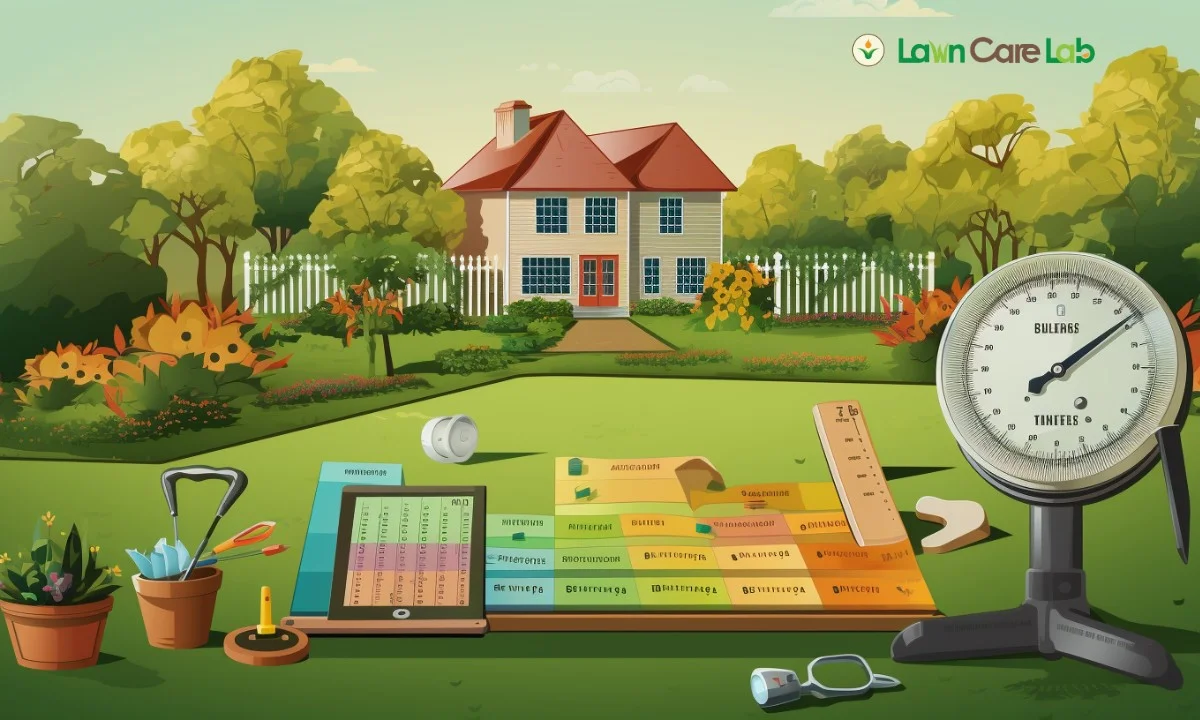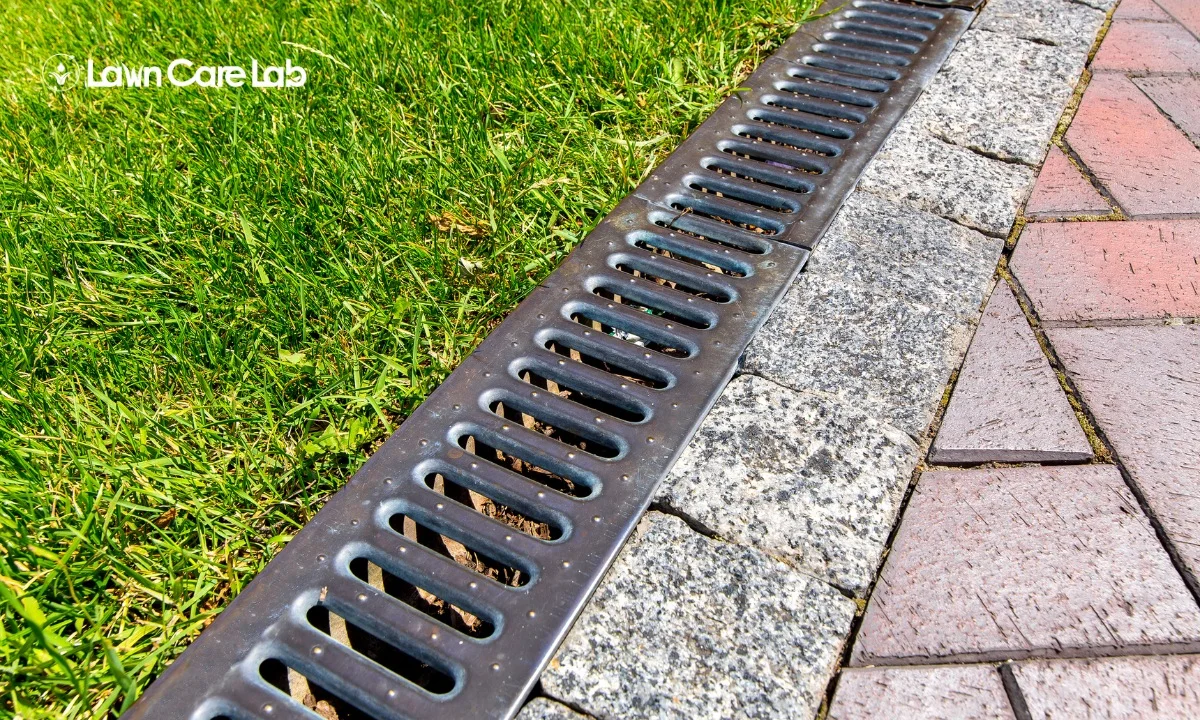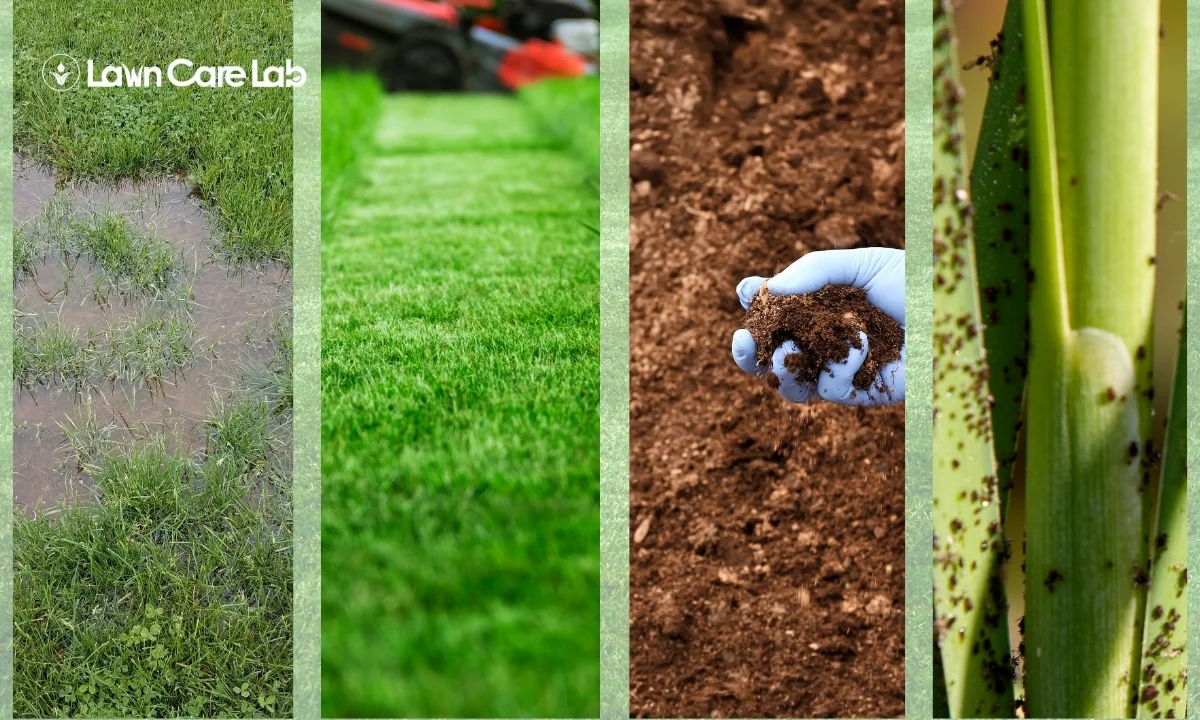This article will guide you in choosing the optimal lawn care techniques for your precious green space. Whether mowing like a pro or watering just enough to stimulate deep-root growth and drought resistance, we have insightful tips for all grass types.
On top of that, we’ll also delve into using organic and synthetic fertilizers to feed your lawns because they have to eat too!
Highlights
- A balanced diet for your lawn, achieved through a well-planned fertilizing schedule, promotes overall health and vitality, enhances growth and vibrancy, and strengthens roots.
- Optimal timing for fertilizing in different seasons, such as early spring, late spring, summer, and fall, ensures the best results and prepares the lawn for seasonal changes.
- Following product instructions for successful lawn care is crucial as it ensures proper application, prevents damage to the lawn, and promotes healthy growth.
- Achieving full coverage with granular or liquid fertilizer, using techniques like broadcast spreaders or sprayers, enhances the yard’s vibrancy and growth and provides an even distribution of nutrients.
Table of Contents
The Best Mowing Techniques for Different Grass Types
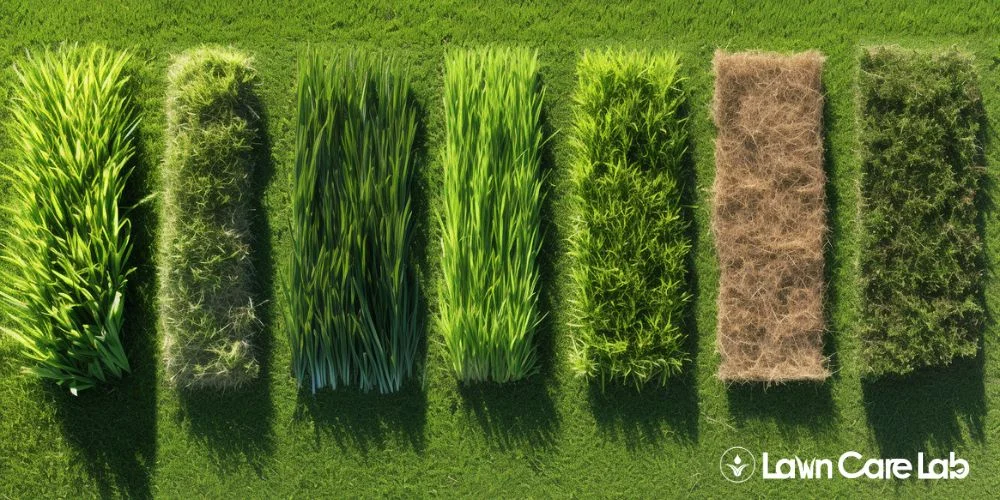
Before you rev up your engine and go full throttle on that unruly green beast, let’s take a moment to chat about choosing the right walk-behind, push, or riding mower for your grass type.
Choosing the Right Walk-behind, Push, or Riding Lawn Mower
You’re standing in your yard, eyeing the expanse of green and wondering which type of mower – walk-behind, push, or riding – will best tame your turf and keep it looking lush.
Selecting the right lawn mower isn’t just about cutting grass; it’s a strategic decision impacting your lawn care techniques.
Here’s a handy table to help you decide:
| Mower Type | Best For | Lawn Care Techniques Impact |
|---|---|---|
| Walk-Behind | Small-medium yards | High manoeuvrability; promotes professional lawn care techniques. |
| Push | Medium-large yards | It requires effort but enhances landscaping techniques and lawn care. |
| Riding | Large estates | It requires effort but enhances landscaping techniques and lawn care. |
Cutting Grass at the Ideal Heights for Each Grass Variety
Knowing the right height to cut grass can mean the difference between a green yard and a downright envious yard. Your grass type isn’t just about aesthetics; it dictates its ideal haircut length!
If you’re rocking St. Augustine or Bermuda grasses, aim for a lush 3-4 inches. That’s right – these guys like their locks long!
Conversely, ryegrass and fescues prefer a neat trim at 2-3 inches; think clean-cut crew cuts here.
Mowing Frequency for Lush, Green Grass
Your mowing habits can make or break that lush, green look you strive for. You’ve got to seize the reins of your lawn’s destiny and mow with purpose!
Now listen closely; here’s how it’s done:
- Aim to mow at least once per week during peak growing season. This isn’t just because you enjoy the smell of fresh-cut grass but also because regular trims keep the turf dense and healthy.
- Don’t play barber too enthusiastically – remove no more than one-third of blade height per mowing.
- Master the art of timing – if your lawn could speak, it would tell you to cut it when growth is rapid!
- Finally, remember that exceptions exist; if you’re experiencing a drought or extreme heat, ease up on the mower.
Proper Lawn Watering Techniques for Deep Roots and Drought Resistance
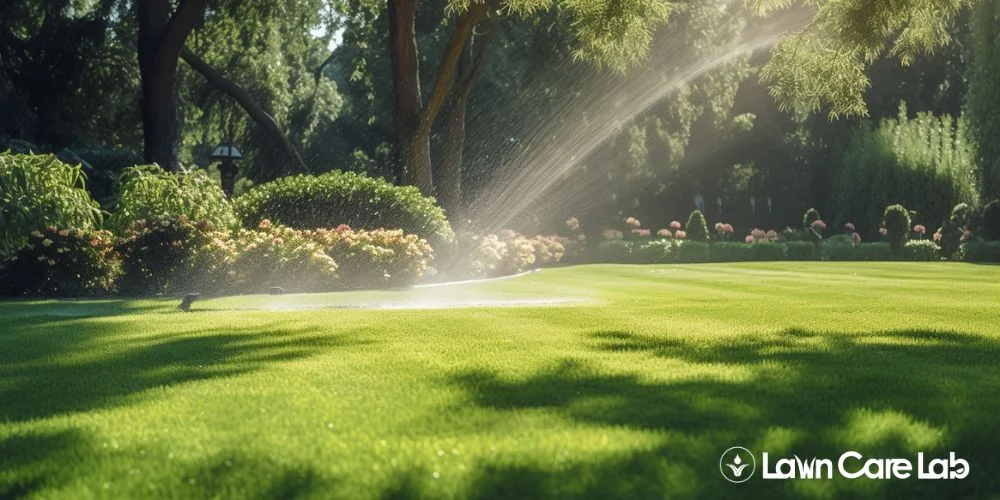
Figuring out just how often and when to water, mastering the deep-and-infrequent method for super strong roots, and learning the ideal times for watering (hint: it’s not high noon) are all crucial skills in your quest for that envy-inducing, drought-resistant lawn.
Determining the Right Lawn Watering Schedule and Frequency
Determining the right watering schedule and frequency for your lawn isn’t just about setting a timer and forgetting it. You’ve got to consider factors like climate, season, grass type, and signs of water stress.
First up, climate. If you live in Arizona versus Alaska, your watering needs will be as different as snow boots and flip-flops.
Seasons? Another clue! Grass drinks more in summer than in winter.
And don’t forget to check your grass type – Bermuda vs. Kentucky Bluegrass is the difference between sipping cocktails or downing beers at a game.
Finally, watch for wilting or dry patches – they tell-tale signs that your lawn is begging for hydration. Cleverly calculated watering equals happy lawns!
Watering Deeply and Infrequently for Stronger Grass Roots
Watering deeply and infrequently encourages this growth, creating a robust root system that can withstand scorching summer heat and freezing winter frost.
But hey, don’t just take our word for it! Dive into these root-boosting benefits:
- Deep Satisfaction: There’s nothing like seeing your lawn thrive in extreme conditions because you’ve invested in its underground strength.
- Grass Swagger: Your neighbours will be green with envy at your lush lawn. Who doesn’t love some friendly competition?
- Eco-Coolness: By watering less frequently but more profoundly, you’re conserving water – making you an eco-friendly superhero!
So give your lawn a deep drink 2-3 times a week.
Watering Early Morning or Evening to Conserve Moisture
To conserve moisture, it’s smart to water your grass in the cool of early morning or late evening. This simple adjustment can give your greenery an extra boost. It’s like giving your lawn a refreshing spa treatment without the cucumber slices.
Why is this method effective? Well, imagine watering at high noon – you’d essentially be showering under a scorching desert sun! Most of the water would evaporate before it even reaches the roots.
However, by embracing twilight watering, you can say goodbye to evaporation and hello to hydration!
So, let the moonlight or dawn guide your gardening efforts instead of watering under the relentless mid-day sun.
Innovate those sprinkler sessions! Your parched turf will thank you with lush, vibrant growth. Now that’s some forward-thinking hydration innovation!
Using Organic and Synthetic Fertilizers to Feed Lawns
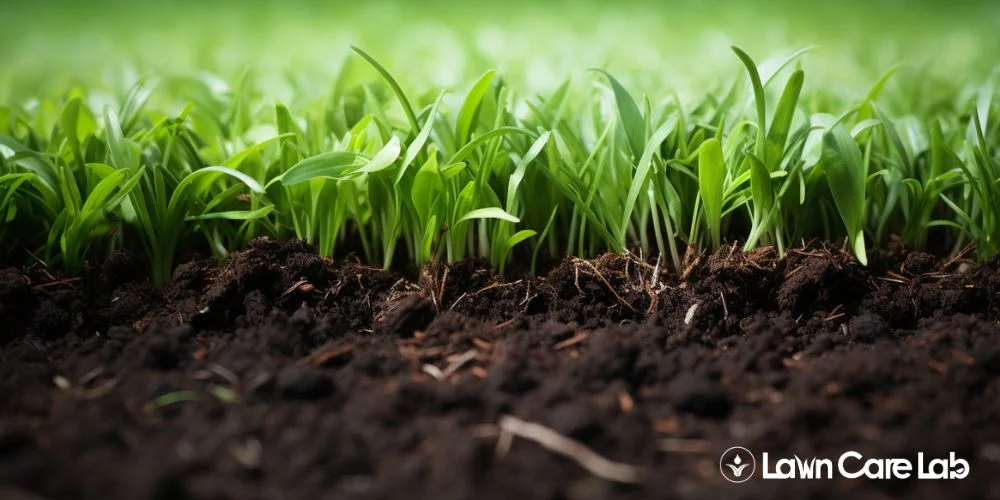
Well, you’ve got your lawn hydrated to perfection, but now that grass looks at you like a hungry teenager after soccer practice. It’s time for the next step: feeding that green beast with just the right grub.
Types of Lawn Fertilizers for Different Needs
Depending on your lawn’s specific needs, many fertilizers exist. Whether it be quick-release N-P-K formulas or organic options like compost and manure, it’s like being at a buffet for your yard!
Think about it: if your lawn is the energetic toddler of the plant world, always raring to grow and show off its vibrancy, then quick-release fertilizers are like giving it a sugar rush – instant gratification but short-lived. On the other hand, slow-release formulas or organics are more akin to a balanced diet—less immediate impact but sustained nourishment.
Choosing between these is like watching fireworks or stargazing – both have moments of glory.
So why not mix things up? After all, variety is the spice of life…and lawns!
Developing a Seasonal Lawn Fertilizing Schedule
Say goodbye to random guessing and hello to strategic, seasonal lawn care.
Here’s a simple table that breaks down the optimal feeding times for your green paradise:
| Season | Fertilizer Timing |
|---|---|
| Early Spring | As soon as the grass starts growing. |
| Late Spring | When temperatures start rising. |
| Summer | During drought stress or high heat. |
| Fall | To strengthen roots and prepare for winter. |
Applying Granular or Liquid Fertilizer for Full Coverage
Achieving full coverage when applying granular or liquid fertilizer can significantly enhance your yard’s vibrancy and growth.
You might feel like a mad scientist mixing potions in your shed, but the results speak for themselves!
For an even application, consider using broadcast spreaders or sprayers. It’s like giving your lawn a five-star meal instead of fast food – it’ll thank you with lushness and vitality.
When spreading the granules or spraying the liquid, imagine painting a canvas – each stroke should be consistent and fully cover the intended area.
Conclusion
So, there you have it, folks! A few nifty tricks up your sleeve – mowing know-how for different grasses, watering wisdom for robust roots, and fertilizer facts to feed your lawn.
Now get out there and unleash your inner green thumb.
Remember: the grass is always greener where you water it… unless you overdo the fertilizer. In that case, good luck explaining those yellow spots to the neighbours!
FAQs on Lawn Care Techniques
Which are different methods of lawn preparation?
Lawn preparation methods include soil testing, removing weeds, tilling, adding topsoil, levelling, and seeding or sodding. Preparing the soil properly is important to ensure a healthy, lush lawn.
How can I improve my lawn coverage?
Start by aerating the soil to improve oxygen circulation to improve your lawn coverage. Then, overseed your lawn to fill in bare spots. Regular watering and fertilizing will also encourage robust growth.
Which is the quickest method of developing lawns?
The quickest method of developing a lawn is through sod installation. It’s more expensive than seeding, but you’ll have a green lawn soon.
Which is the most popular method for developing lawns for a home garden?
Seeding is the most popular method for developing a lawn for a home garden. It’s cost-effective and allows for a wider variety of grass types.
What is the classification of lawn grass?
Lawn grasses are classified into two main types: warm-season grasses, which grow best in hot weather, and cool-season grasses, which prefer cooler temperatures.
Which fertilizer is best for grass?
The best fertilizer for grass will contain a balance of nitrogen, phosphorus, and potassium. Nitrogen promotes leaf development, while phosphorus and potassium encourage root growth.
What is the best top dressing for lawns?
Top lawn dressing typically consists of a mix of compost, sand, and loam. This mixture improves soil structure, aids moisture retention, and provides nutrients for grass growth.
- Special Considerations and Techniques for Maintaining Sloped Lawns - July 15, 2024
- How Green Spaces Influence Community Interactions - July 8, 2024
- Lawn Fungal Diseases: Identification and Treatment - July 3, 2024

